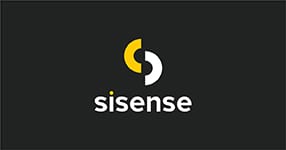
But now, it is time for these businesses to level their data up. Business now have better access to and visibility of their data. Organisations now need to build on their understanding of that data.
For 2022, we will see three major shifts in data-driven organisations. Firstly, organisations will redesign the way they let their employees digest data. Organisations will be more flexible when it comes to remote working. Finally, prescriptive guidance will become an integral part of a business.
Let’s dive deeper into these three major predictions for 2022.
Organisations will redefine what it means to build a “culture of analytics.”
For too long, business leaders have assumed that upskilling their workforce with data classes/certifications and investing in self-service tools would lead to a data-driven organisation. They are finally ready to admit that it’s not working. Self-service BI does not “close the skills gap”. Not everyone has the time or interest in becoming a data analyst or even data literate. Especially in today’s post-COVID landscape where teams are understaffed and people value their time differently in and outside of work.
In 2022, organisations will redefine what it means to build a “culture of analytics”. They will change the paradigm by bringing insights to workers in a more digestible way – turning to methods and solutions like embedded analytics that won’t require them to learn new skills or invest additional time.
Data-driven organisations will bring analytics and insights to workers where they are.
The rise of work-from-home and the digital acceleration brought on by the pandemic means that more people are using tools that will work in any location. These include traditional tools such as email and newer collaboration software like Slack and Teams to the many point solutions needed to get work done across departments. As a result, workers everywhere are experiencing tool fatigue. They create distractions and inefficiencies from jumping around from software to software or being forced to use tools that don’t fit into their personal workflow.
Investing in data/analytics solutions that add yet another tool to the mix is no longer best practice. Instead, we’ll start to see more organisations in 2022 delivering insights to employees directly within their workflows via embedded analytics (for example, directly within Slack, Teams, etc.). In this environment, workers can make data-driven decisions without thinking twice and without any disruptions.
Automation turns prescriptive analytics into prescriptive guidance.
For years we heard that the future of analytics will go beyond descriptive analytics (what happened) and predictive analytics (what will happen) to prescriptive guidance (what to do about it). AI combined with automation will finally make this possible by dynamically combining relevant data and alerting knowledge workers to take action before an event occurs.
- Customer Service reps will be notified to reach out to potentially angry customers before they even call in.
- Sales leaders will react immediately to dips in revenue pipeline coverage due to upstream activities without waiting until the end of the quarter.
- Retail managers can optimise inventory before items sell out by combining more than just sales data. Additional data could include purchasing patterns of other items, external market trends, and even competing promotional campaigns.
Prescriptive analytics will finally evolve from telling us just where the numbers are going, to helping us make smarter, proactive decisions.

























